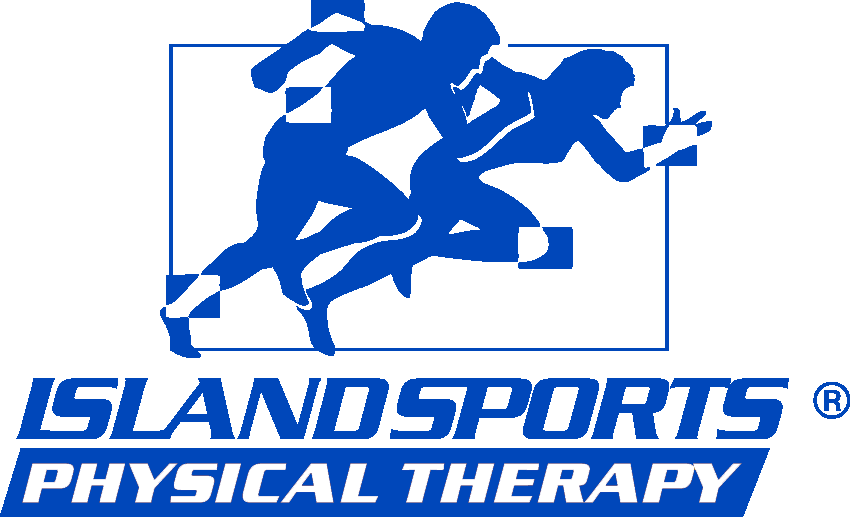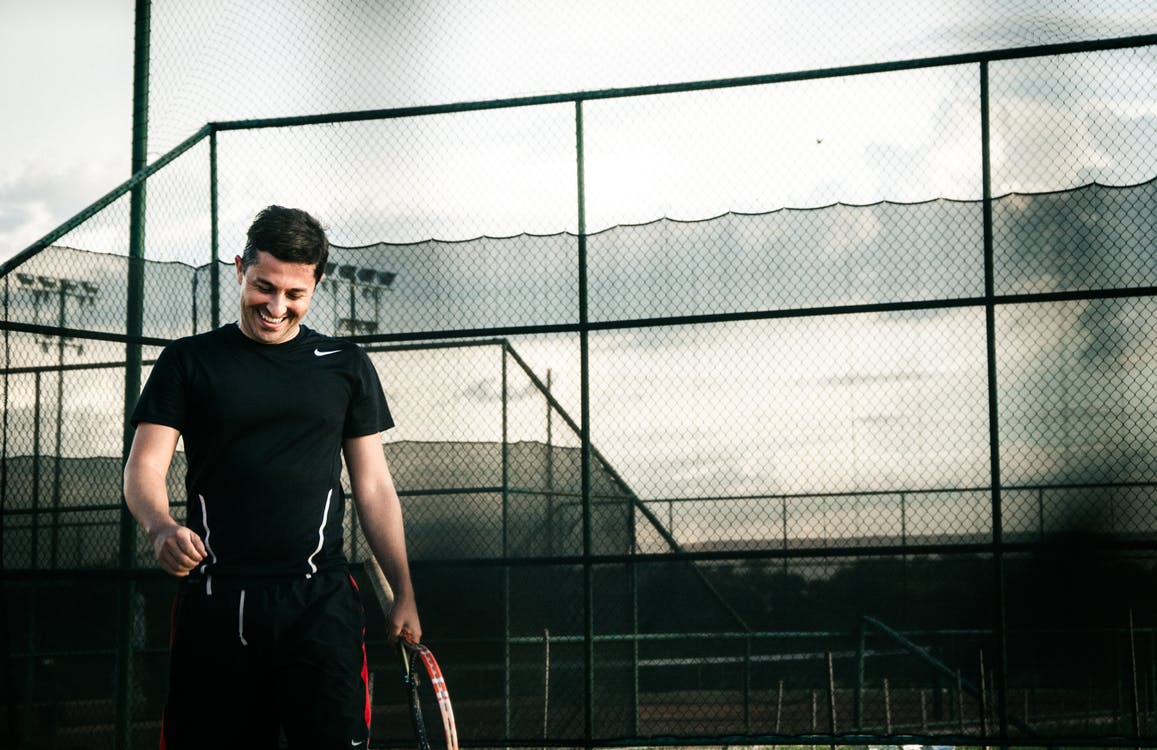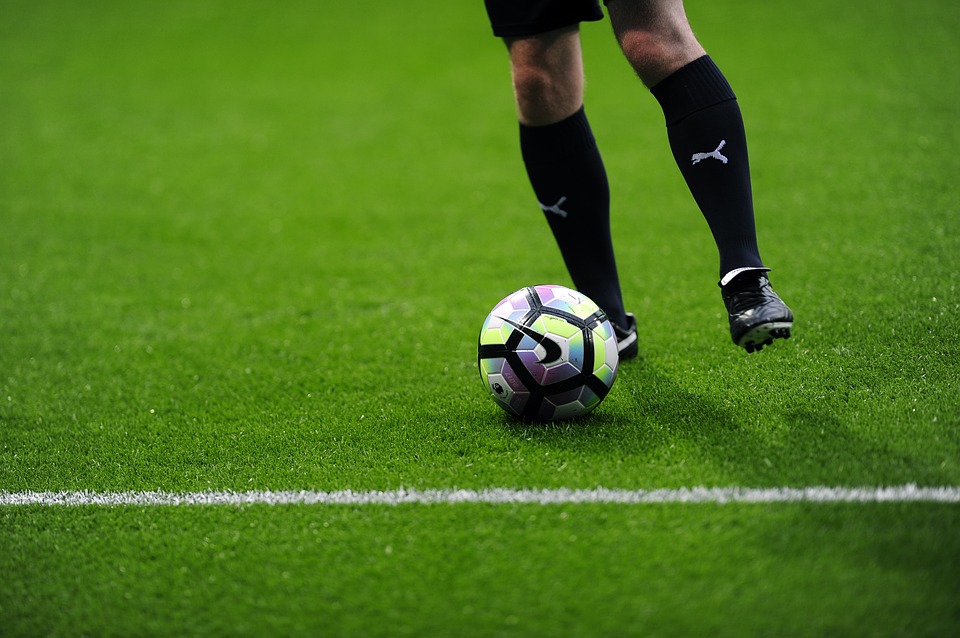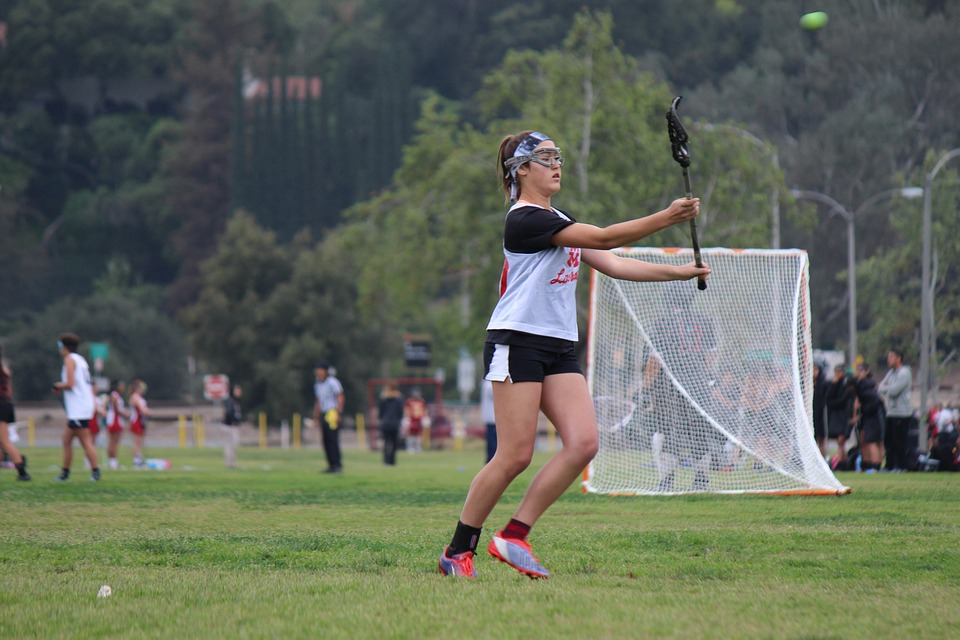How to Deal with Tennis Elbow
What is Tennis Elbow?
Tennis Elbow, also known as Lateral Epicondylitis, is a form of tendinitis. Tendinitis is the swelling of the tendons, which in this form, causes pain in the arm and elbow. Despite its name, there is a small group of people diagnosed with Tennis Elbow that actually play Tennis. If you are straining the muscles around the elbow over and over again during any activity, it could happen. If you are looking for physical therapy in Nesconset, Island Sports Physical Therapy will help you not only feel better, but we will educate you on the injury in hopes to prevent future re-injury of Tennis Elbow.
Symptoms:
1. Upper Forearm Pain
This is a very common symptom of Tennis Elbow. On the outer arm, right below the elbow is where this “burning pain” commonly occurs.
2. Is Rest Bringing You Relief?
If you are looking for physical therapy in Nesconset, rest is not bringing you relief and you cannot move your elbow or are even losing feeling in it, contact us for quality care.
3. Pain Variations Throughout Your Day
The morning is usually the time where you will experience the most pain. The stiffness and aching lessen throughout the day but will still continue at some level.
4. Too Much Activity Hurts!
If you have Tennis Elbow, common activities and tasks such as lifting your fork or holding a pen may hurt. Moving your wrist forcefully such as twisting your arm to open a heavy door or repetitive computer mouse use will also cause you pain.
Treatment at our Physical Therapy Practice in Nesconset
- Reducing Inflammation
- Rest
- Reducing Pain
- We will give you pain reducing remedies to do at home, such as icing.
- Ongoing Rehabilitation
- Exercise and other physical therapy treatments to increase your range-of-motion and decrease pain at the same time.
- Bracing/Compression by wearing a counterforce brace for Tennis Elbow. The strap used will spread pressure throughout your arm, instead of putting it all on your tendon causing your pain.
- Working with an expert here at Island Sports Physical Therapy to fit your individual needs.
How Physical Therapy Could Help
DON’T WAIT! The longer you wait to see a physical therapist and perform strenuous activities, the longer rehabilitation will take. Ongoing activity to the tendon can cause damage and could someday require surgery.
How Physical Therapy in Nesconset Could Help
- We will correctly diagnose you
- We will give you “hands-on” care
- We will educate you
- We will give you home remedies that fit your individual need
- We will maximize your performance
Working with one of our experts here at Island Sports Physical Therapy will help specify your injury to know the exact treatments that need to be done. We promise to educate you and give you the best care possible while giving you the information you need about Tennis Elbow and give you ways to prevent this injury from happening again in the future.
Frequent Shoulder Dislocation
The shoulder is among the most mobile joints in the human body. The persistent utilization of this joint is common for athletes that play sports like baseball, volleyball, and swimming, which may cause dislocation. This is due to the constant wear and tear of ligaments and tendons that surround the shoulder joint. At Island Sports Physical Therapy, our physical therapists in our many locations including Huntington, East Northport, Glen Cove, Nesconset, East Meadow, and Coram are here to create tailored rehabilitation programs that will get you back on the court, in the pool, or on the field in no time!
What are My Symptoms?
Once an athlete has dislocated their shoulder, the chances of it dislocating again increase, causing an instability in the joint. The following symptoms of such instability include:
Treatment With Physical Therapy in Huntington, NY
Depending on the severity of the injury, the average healing period for a dislocated shoulder is between 4 and 12 weeks. Our physical therapists in Huntington, NY will conduct a complete assessment in order to create a program tailored to the specific needs that will help you get back in the game! These programs may include exercises that focus on:
- Strength: After a dislocation injury, the muscles around the joint may be extremely weak. Depending on the severity of the injury, our therapists may incorporate certain exercises that will build up those weak muscles.
- Range of Motion: Our therapists will take you through the motions as well as gently stretch you in order to help you gain back that range of motion.
- Your Specific Sport: Our therapists will create exercises that are tailored to your specific sport which can help you regain comfortability with the motions.
Above all, it is important that you give your body a chance to rest once you’ve had a shoulder dislocation injury. Failure to do so will only prolong the healing process and cause the injury to recur. Our physical therapists in Huntington, NY at Island Sports Physical Therapy are dedicated to helping you heal and get you back to your top performance levels. Please visit us at our many locations in Huntington, East Northport, Glen Cove, Nesconset, East Meadow, and Coram or call us at 631-462-9595 today!
Recovering from ACL surgery
An ACL tear happens when the knee experiences sudden twists or changes in direction. People who play high-impact sports are especially susceptible to ACL tears. These sports include but are not limited to soccer, football, basketball, volleyball, etc. When an ACL is torn, there is typically a popping sound, swelling, and pain.
ACL surgery typically features a graft that involves taking a ligament from another part of the body to replace the torn ACL. Recovery from an ACL tear can take anywhere from 6 to 12 months. The help of a physical therapist is crucial to the success of your recovery. Island Sports Physical Therapy has offices all over Long Island in East Northport, Huntington, Nesconset, Coram, East Meadow and Glen Cove. They specialize in sports specific therapy and are more than capable of helping you return to playing soccer after ACL surgery.
ACL surgery recovery features:
- Right after the surgery, you should immobilize your knee to aid the healing process.
- After surgery, you should use ice to reduce swelling of the knee.
- Gradually placing weight on the knee with or without the aid of a knee brace or crutches.
- Your physical therapist will then help you achieve full range of motion with the recovering knee.
- Muscle strengthening exercises will be incorporated into your recovery to help regain strength lost during the immobilization phase.
- The later stages of recovery involve advanced strengthening techniques, advanced cardio exercises, and balance/stability exercises to strengthen the new ACL.
Even though a physical therapist is crucial to your ACL tear recovery, misinterpreting their advice or pushing yourself too fast can do more harm than good. In fact, it can make your recovery longer as well as lead to additional surgeries.
Contact us!
If you’ve had ACL surgery and wish to have a speedy recovery to be able to return to soccer contact one of Island Sports Physical Therapy’s Long Island offices today!
Men’s Lacrosse Injuries
Lacrosse is America’s fastest-growing sport, in the past decade, high school lacrosse has exploded. The sport has four major versions that have different sticks, fields, rules, and equipment: men’s field lacrosse, women’s lacrosse, box lacrosse, and intercrossed.
Although lacrosse is growing at a rapid speed, it also comes with a lot of potential injuries. Due to the different rules between the men and women, it is important to understand how injuries can occur in both versions. Lacrosse injuries are also more common in males because it’s a contact sport. The women’s game does not allow body contact but does allow the stick to stick contact.
Common Lacrosse injuries include:
- Ankle Sprain
- Head and face contusion
- Concussion
- Knee sprain (ACL, MCL)
- Wrist fracture
- Hip flexor strain
- Low back pain
- Shoulder separations
- Shoulder subluxations
- Quadriceps strains
Overall, lacrosse is a moderate risk sport in which the vast majority of injuries can be corrected by a physical therapist. That being said, a number of common injuries do occur in both men’s and women’s lacrosse as a result of contact with a player, another stick, or the ball.
Some ways to prevent injuries are, wear the right equipment, know the rules of the game, take a break, and report all injuries. Also stay in shape all year round and warm up properly by thoroughly stretching and gradually increasing the intensity of the workouts.
With any injury, participation should be stopped until an assessment is made by a qualified health professional. For athletes who have experienced a sports-related injury such as lacrosse, Island Sports Physical Therapy will help to speed up recovery and restore function. So the player is ready to get back in the game.
At Island Sports Physical Therapy we believe that patients need to coincide with their physical therapy and treatment.
Common Women’s Lacrosse Injuries
Women’s lacrosse, one of the most popular sports in North America is known for causing many injuries among its players. Island Sports Physical Therapy in Huntington, East Northport, Nesconset, East Meadow, Glen Cove, and Coram, treat many women who have suffered from common lacrosse injuries. The most important thing Island Sports Physical Therapy focuses on is a fast and full recovery for their patients, and making sure that they are able to get back to playing as soon as possible. If you play lacrosse in Huntington, NY, Island Sports Physical Therapy can help treat a wide variety of injuries.
Lacrosse is known as a moderate risk sport and the majority of injuries are sprains, strains, and bruises, however many other serious injuries also occur such as
- Ankle sprain
- Head or face contusion
- Concussion
- Knee sprain (ACL, MCL)
- Wrist fracture
- Hip flexor strain
- Low back pain
- Many more
It is important for women’s lacrosse players to cease activity that uses the injured part of the body in order to prevent it from getting any worse. Often times the injury occurs because of repetitive motion or continuously injuring the same area. Lacrosse requires a lot of stopping and starting, sprinting and vigorous exercising that can get the culprit of the injury.
The good news is that there are many ways to prevent women’s lacrosse injuries and there are also many ways to treat these injuries. It is important for women’s lacrosse players to stay in shape even during the offseason in order to keep their muscles conditioned to the hard workouts during the season. This helps to prevent many injuries because the body is not shocked when it needs to perform during the season. Some other ways to prevent and treat women’s lacrosse injuries are:
- Know the rules
- Maintain open communication
- Be proactive in conditioning
- Wear the right equipment
- Take a break
- Report all injuries
- Cess participation if injured
- Apply heat or ice depending on the injury
- Always stretch and exercise
- See a physical therapist
If you or anyone you know is suffering from a women’s lacrosse injuries or plays lacrosse in Huntington, NY and needs tips and information on how to treat that injury, schedule an appointment at Island Sports Physical Therapy of Huntington at 631-462-9595 or visit our website, https://islandsportspt.com .
Physical Therapy in Huntington
The shoulder is an essential joint for sports players. Used in overhead reaching motions, the shoulder is most used in tennis, baseball, and swimming. What makes the associated movements possible is the rotator cuff. The rotator cuff is a series of muscles and tendons that keep your arm in your shoulder socket. The most infamous injury associated with the shoulder is the rotator cuff tear. This tear occurs when force is placed on the rotator cuff muscles to accelerate the arms, such as the front stroke in swimming, or pitching in baseball, and then suddenly decelerated. If you are looking for rotator cuff physical therapy in Huntington, East Northport, Nesconset, East Meadow, Glen Cove, and Coram, contact us today!
To get back to playing your sport you must follow the stages of recovery:
Acute
- During this phase, the shoulder must be immobilized. In some cases, a sling is used. Usually, this injury will require rotator cuff physical therapy. A licensed physical therapist in Huntington at Island Sports Physical Therapy will use ultrasound and other techniques to help start the healing process. After properly icing the shoulder, a physical therapist will begin teaching you mobility exercises and strengthening exercises.
Recovery
- Once your shoulder is operating at 3/4ths efficiency the recovery phase can begin. This phase focuses entirely on strengthening exercises that work the four main muscles in the rotator cuff. Exercises in this stage will focus on correcting the ranges of motion.
Functional
- The functional phase is designed to facilitate your return to athletic competition and involves exercises designed to increase explosiveness and regain coordination. For a baseball player, these exercises will involve throwing light/small balls. Eventually, the exercises will increase in intensity and involve real baseballs.
After your recovery phases have been completed you should get back into practice by completing your standard practices and make not of any shoulder pain experienced. If you experience no pain your Huntington physical therapist will clear you for official participation. If you are in search of rotator cuff physical therapy to facilitate your recovery, contact Island Sports Physical Therapy in Huntington, East Northport, Nesconset, East Meadow, Glen Cove, and Coram today.
DEALING WITH AN ANKLE INJURY AS A SOCCER PLAYER
With soccer being a contact sport, players are at high risk of injuries involving strains and sprains to the lower extremities. Ankle sprains are the most common injury soccer players suffer from. Why? The uneven surface, sharp turns while running, collisions with other players and landing from a jump all contribute to the high risk of an ankle sprain. Are you seeking Ankle Injury Treatment in Huntington, NY? Contact Island Sports Physical Therapy today!
If you have suffered an ankle injury as a soccer player and live near East Northport, Huntington, Nesconset, Glen Cove, Coram, or East Meadow, our physical therapists at Island Sports Physical Therapy can help you recover!
5 exercises you can do to strengthen your ankle and prevent injury:
- Ankle circles
- Ankle alphabet
- Calf raises
- Shin raises
- Single leg balance
Click to learn more about these exercises!
Our physical therapists in East Northport, Huntington, Nesconset, Glen Cove, Coram, and East Meadow appreciate the importance of wearing proper soccer shoes. Players often choose too narrow of shoes because a tight shoe makes them feel more in control of the ball. Unfortunately, this is a direct cause of players’ ankle injuries. At Island Sports Physical Therapy, we will measure your foot and give an expert recommendation on which size/style will be best for you.
When soccer players suffer from ankle injuries, the area will often swell and bruise at a fast rate. Icing the ankle will help to reduce inflammation and prevent further bruising. Treatments for ankle sprains due to soccer injuries often include the following:
- Use of crutches for the first few days after injury
- Taping the ankle
- Wearing a compression boot
- Wearing a soft cast
If the game you love has caused you to suffer a painful ankle sprain, give us a call at ISPT. In East Northport, Huntington, Nesconset, Glen Cove, Coram, and East Meadow, our physical therapists will help to heal your ankle and get you back in the game!
Frequent Shoulder Dislocation
The shoulder is among the most mobile joints in the human body. The persistent utilization of this joint is common for athletes that play sports like baseball, volleyball, and swimming, which may cause dislocation. This is due to the constant wear and tear of ligaments and tendons that surround the shoulder joint. At Island Sports Physical Therapy, we provide treatment for shoulder dislocation in Huntington, NY as well as across Long Island. Our physical therapists are located in Huntington, East Northport, Glen Cove, Nesconset, East Meadow, and Coram are here to create tailored shoulder dislocated physical therapy programs that will get you back on the court, in the pool, or on the field in no time!
What Are My Symptoms?
Once an athlete has dislocated their shoulder, the chances of it dislocating again increase, causing instability in the joint. The following symptoms of such instability include:
- Shoulder pain
- Shoulder giving out or a feeling of instability
- Limited motion of the shoulder
Treatment For Shoulder Dislocation in Huntington, NY
Depending on the severity of the injury, the average healing period for a dislocated shoulder is between 4 and 12 weeks. Our therapists will conduct a complete assessment in order to create a shoulder dislocated physical therapy program tailored to the specific needs that will help you get back in the game! Treatment for shoulder dislocation in Huntington, NY may include exercises that focus on:
- Strength: After a dislocation injury, the muscles around the joint may be extremely weak. Depending on the severity of the injury, our therapists may incorporate certain exercises that will build up those weak muscles.
- Range of Motion: Our therapists will take you through the motions as well as gently stretch you in order to help you gain back that range of motion.
- Your Specific Sport: Our therapists will create exercises that are tailored to your specific sport which can help you regain comfortability with the motions.
Contact Us Today
Above all, it is important that you give your body a chance to rest once you’ve had a shoulder dislocation injury. Failure to do so will only prolong the healing process and cause the injury to recur. Our therapists at Island Sports Physical Therapy are dedicated to helping you heal and get you back to your top performance levels. Please visit us for shoulder dislocated physical therapy in Huntington, East Northport, Glen Cove, Nesconset, East Meadow, and Coram, or call us at 631-462-9595 today!
Knee Injury
The knee is a complex, large and major joint in the human body. It is composed of bones, joints, ligaments, tendons, muscles, nerves, and blood vessels. The knee has a great responsibility for us as it is required to support the full body’s weight when standing, walking, and running, therefore it is to no surprise that many athletes experience knee injuries while playing sports.
Knee injuries vary in type as well as severity. Some common knee injuries that athletes can face include:
- Patellar fracture
- Patellar dislocation
- ACL tear
- PCL tear
- Meniscal tear
- Tendon tear
- Ligament injuries
While these injuries may not be life-threatening, they can very well be life-altering if not treated properly or cared for immediately. When first injured, it is imperative that the athlete ceases activity and follows the RICE method immediately:
- Rest
- Ice
- Compression
- Elevation
If symptoms persist or worsen, it is suggested that the injured athlete visits a medical professional immediately. Depending on the severity of the injury, the doctor will suggest one of the following treatments:
- Immobilization
- Physical Therapy in East Meadow
- Anti-inflammatory medication
- Surgery
In order to treat knee injuries, physical therapists induce a variety of techniques, including, but not limited to, heat and ice therapy, stretches and exercises, ultrasound therapy, and electrical nerve or muscle stimulation. The goal of physical therapy in East Meadow for a knee injury is to strengthen the knee and the affected area and restore full mobility to the knee. Treatment duration depends on the severity of the case, but it is likely that the patient will be required to undergo a couple of sessions per week for about two months. The end goal is to restore the knee to full health, all the while avoiding the complications of surgical intervention.
At Island Sports Physical Therapy in East Meadow, our therapists have the skills and knowledge necessary to fully heal your injured knee. If you’re looking for an experienced PT that will give you a personalized treatment plan and be with you every step of the way, look no further. Call us to schedule an appointment today and relieve your pain!
What is Diabetes?
Diabetes is a disease in which the body does not produce, or properly use insulin. When your body doesn’t produce enough insulin, glucose builds up in the blood causing abnormally high blood sugar levels. Diabetes can affect anyone at any age and can cause many problems in one’s life. If you have Diabetes and are searching for ways to combat the effects it has had on your life, contact Island Sports Physical Therapy in Nesconset, Huntington, Glen Cove, East Northport, East Meadow, and Coram to see how we can help you today.
How Can Physical Therapy in Nesconset Help?
Physical therapy at Island Sports Physical Therapy in Nesconset can improve your ability to move, perform daily activities, reduce your pain, and possibly lower your blood glucose levels. Before starting physical activity, our specialists will conduct a complete assessment of your strength, flexibility, endurance, and balance. This will help us design an individualized treatment program that addresses your specific problems and needs.
Motion. Our physical therapists will choose specific activities to help restore normal movement. These might begin with passive motions and eventually progress to active exercises that you are able to do yourself.
Flexibility. Our physical therapists will determine if any of your muscles are tight and will begin to help you gently stretch them while teaching you the stretches to do on your own.
Endurance. If you are suffering from weakness due to inactivity, we will teach you exercises to improve endurance, so that you can return to your normal activities.
Balance and coordination. Regaining your sense of balance and coordination is important in many aspects of life including preventing you from falling.
Walking. Our physical therapists can improve your walking ability and comfort by adjusting and refitting your shoes or by adding inserts. If you need a walker or cane, we will also teach you how to use support equipment.
Blood Glucose levels. Physical activity can help lower your blood glucose levels. An individualized exercise program designed for you can help control and lower your blood glucose levels each day.
There are many benefits to starting physical therapy for people who have Diabetes. At Island Sports Physical Therapy in Nesconset, Huntington, Glen Cove, East Northport, East Meadow, and Coram, we focus on each patient’s individual needs in order to help you heal and get back on your feet as quickly as possible. Call us at 631-462-9595 today!











